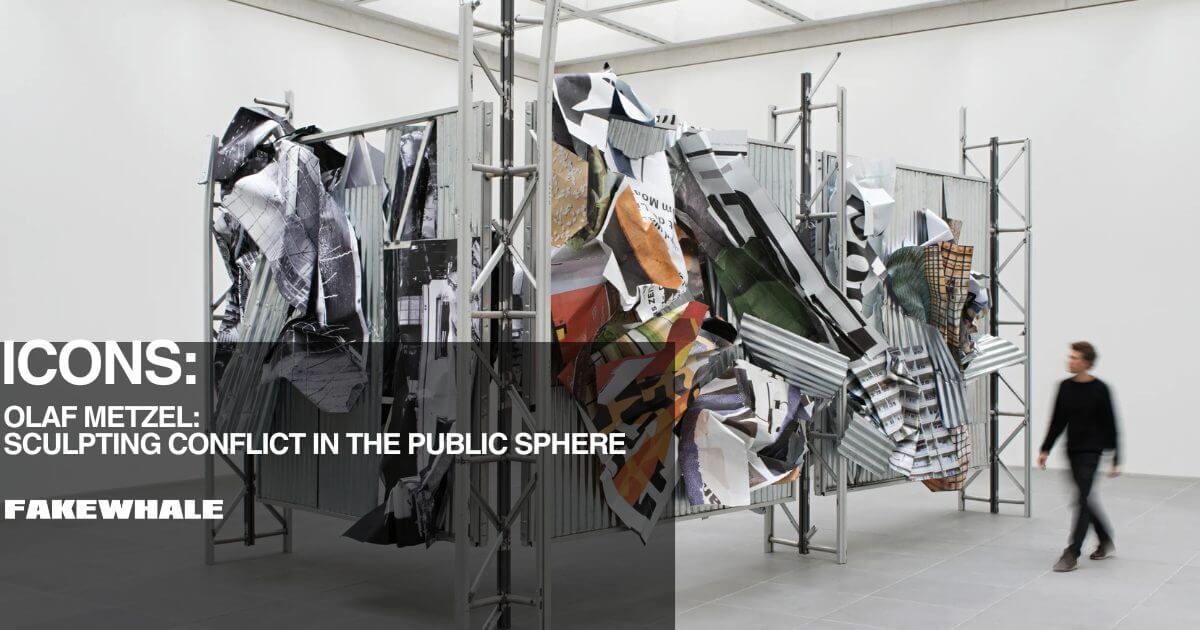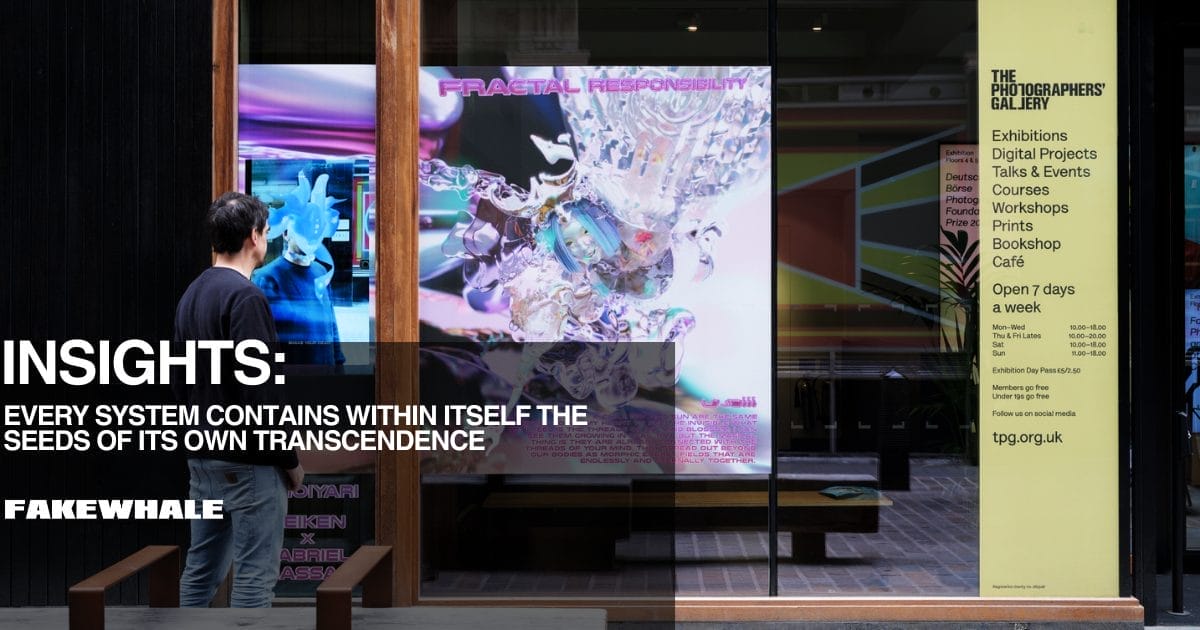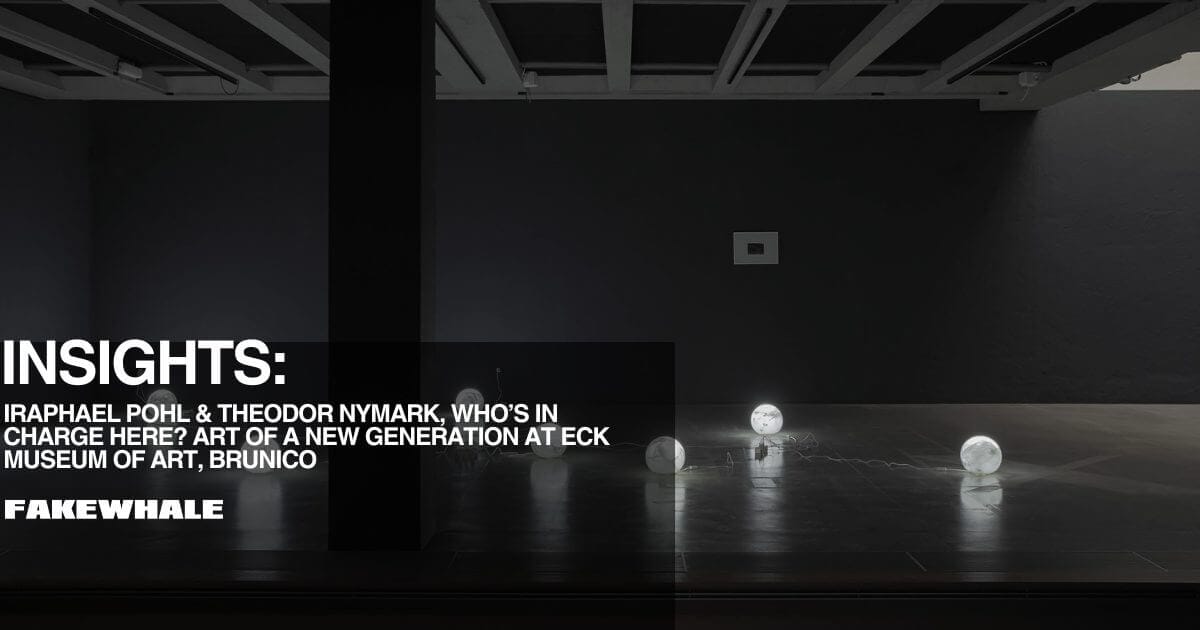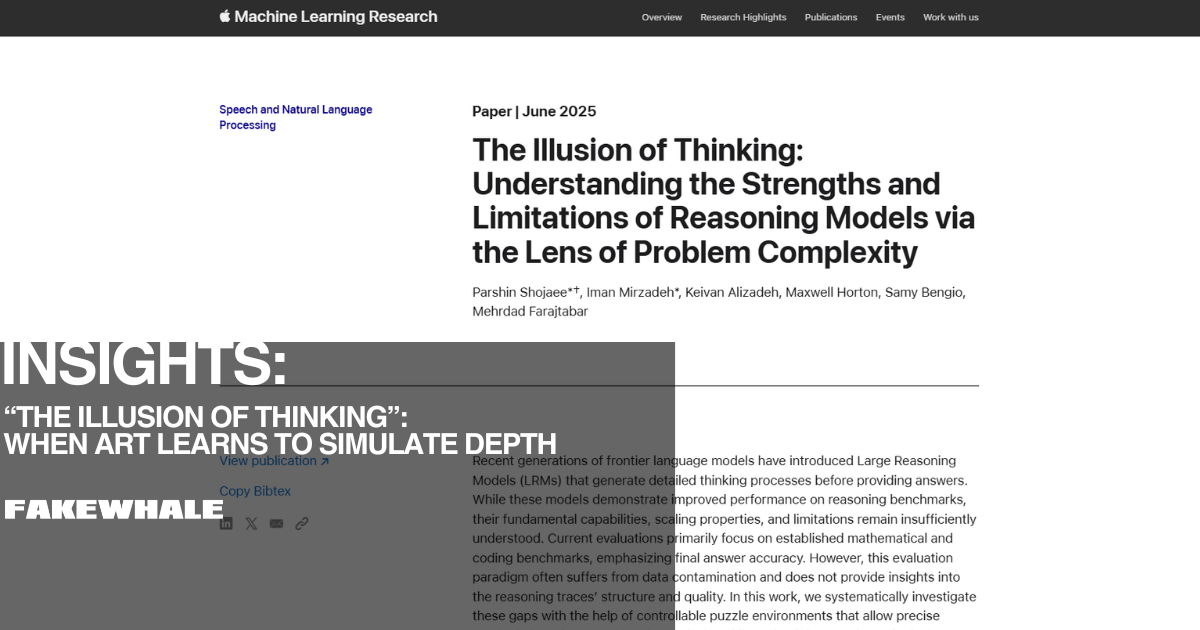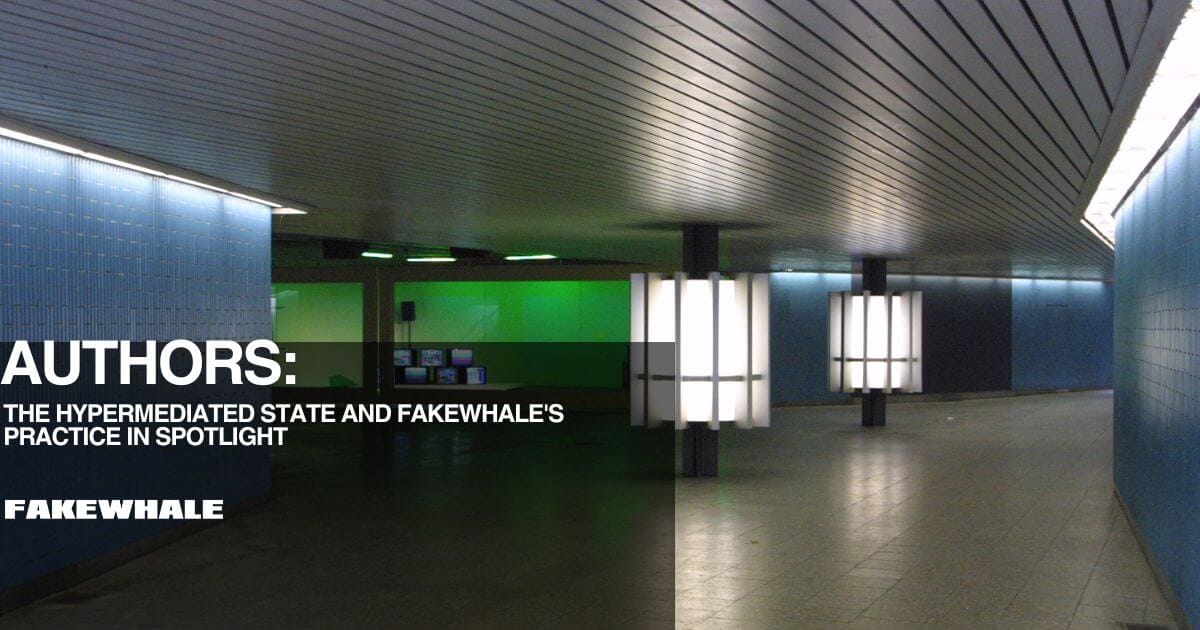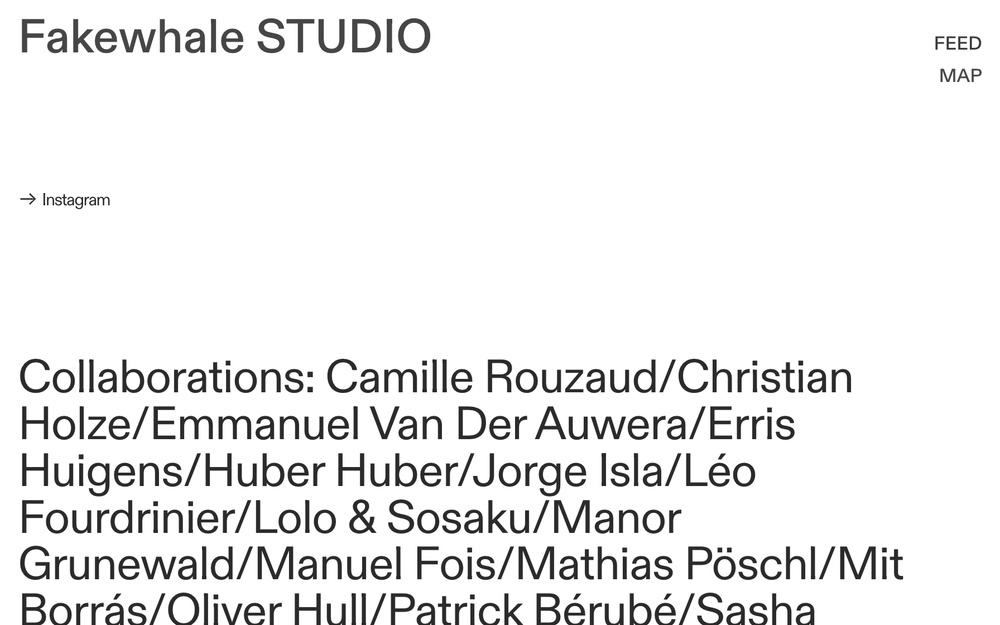
Olaf Metzel: “13.4.81” (Randale-Denkmal), Ku'damm, Charlottenburg, 1987
“Creative crises marked by self-destruction and rejection of one’s own work have been a professional focus of mine for many years. These are artistic journeys whose duration and intensity can vary greatly, yet they tend to follow remarkably similar stages: recognition, identification, momentum, structure, saturation, rejection, and so on. The story of my patient is among the most heartbreaking I’ve encountered. An exceptional painter, perhaps even a genius, but deeply hostile toward his own creations. Every piece, whether completed or abandoned midway, became the target of furious, visceral, often brutal self-criticism. Over time, he came to believe that not painting at all was the only honest choice, since every mark on the canvas, in his eyes, represented a profound compromise with the audience.
If it’s true that every work is born from a negotiation with the world, he projected his inner battle onto the realm of total abstention. Gradually, he developed an obsessive theory: that the true artist is the one who renounces. Renounces form, coherence, conformity with other artists, the label of “artist” itself, even the material medium.” — FW
ICONS/ Olaf Metzel: Sculpting Conflict in the Public Sphere

Olaf Metzel, Kottbusser Tor, 2017 Aluminium, stainless steel, digital print 105 1/10 × 90 3/5 × 55 1/10 in | 267 × 230 × 140 cm
Few contemporary artists have weaponized sculpture as incisively as Olaf Metzel. For over four decades, his work has functioned less as form and more as friction, agitating, intervening, and destabilizing the sanitized surfaces of German public memory. Metzel doesn’t merely place objects in space; he detonates them into the unconscious of a society still struggling with the unresolved layers of its own history.
Born in 1952 in Berlin and long based in Munich, Metzel emerged as a critical voice in the late 1970s, just as post-war German art was undergoing a transition from post-minimal abstraction to politically charged conceptualism. Unlike his contemporaries who gravitated toward institutional critique or archival aesthetics, Metzel chose confrontation. His sculptures are not explanatory, they’re inflammatory. They don’t describe violence; they simulate its residue.
From the outset, Metzel revealed a deep distrust in the neutrality of form. One of his earliest actions, Türkenwohnung, Möbel und Einrichtung 12.000 DM VHB (1982), staged in a former Turkish guest worker’s flat, involved the destruction of furniture and the carving of a monumental swastika into the wall, a jarring collision of bureaucratic language, racial displacement, and historical trauma. Rather than aestheticize social critique, Metzel inscribes it directly onto the architecture of everyday life.
CONTINUE READING ↓
DIALOGUES/ This Sculpture Doesn’t Exist: Matteo Rattini in Dialogue with Fakewhale
Matteo Rattini’s work stems from a radical intuition about the identity and life cycle of art images in the digital sphere. His practice intertwines critical observation of platforms, displaced authorship through artificial intelligence, and visibility as both an aesthetic and political condition. His 2020 project This sculpture doesn’t exist anticipated many of today’s conversations around generative art, using a personal dataset and automated publishing strategies to question our ability to recognise, value, and differentiate art within the endless flow of online content. We at Fakewhale had the pleasure of speaking with Matteo about these key intersections, exploring his methods, concepts, and the evolving landscape of digital aesthetics. (…)

Captions - 2023 - installation view - 105ma Collettiva, Bevilacqua la Masa Foundation, St. Mark’s Square
akewhale: This sculpture doesn’t exist emerged during a pivotal moment, the 2020 lockdown, and directly questioned how art circulates within digital platforms. What drove you, at that time, to build your own dataset and generate images that could so seamlessly blend into real-world art feeds?
Matteo Rattini: Even before the pandemic, digital platforms were silently mediating much of our daily experience, but it was the global rupture that suddenly exposed just how total the mediation had become. At that point, online platforms were globally reshaping not only our social interactions but also cultural production and aesthetic experiences. Spectators were suddenly turned into users and fed hundreds of images of artworks and installation views, with little control over what they were shown. While those images retained a spectral quality, always raising the question whether something essential was missing from the canonical aesthetic experience, they were also consumed in an unprecedented form, shaped by algorithmic recommendation systems. These algorithms, operating according to logics completely detached from the criteria historically used to evaluate art, chose on behalf of viewers what they would see, locking them into loops of homogeneous content based on prior behaviour.
Simultaneously, the rise of artificial intelligence, gaining popularity through websites like This Person Doesn’t Exist, marked the beginning of a profound shift in our relationship with images. It became clear to me that AI was the most fitting tool to investigate the nature of online aesthetic consumption and to render visible the standardising processes induced by algorithmic systems – a phenomenon that could only be explored through the very mechanisms shaping it.(…)
CONTINUE READING ↓
REVIEWS/ HSUBAND at Plicnik: Coupling Systems and Industrial Poetics

install shot. Works by Catinca Malaimare Scenography in collaboration with Amélie Mckee and Melle Nieling
Every factory seems to promise a form of coherence. HSUBAND stages that promise as a condition under inspection: parts, protocols, bodies, words. The space appears frictionless, an environment where coupling is always theoretically achievable, yet the terms of that coupling remain unsettled.
The installation presents a choreography of infrastructural elements: red rubber flooring absorbing and reflecting a muted clinical light; modular rollers, platforms, stairs that ascend without destination; gridded ceiling arrays that flatten warmth into a uniformly operational brightness. Nothing here performs in the conventional sense; the “machines” hold a posture of readiness, suspended between instruction and action.
Language, channelled through the exhibition text authored by Melle Nieling, acts as a parallel material system. Rather than narrative captions, the text samples and recombines tones of technical manuals, HR policies, and engineering checklists, allowing bureaucratic syntax to fray into a lightly disorienting poetry.
This textual stratum does not masquerade as the artist’s voice; it operates adjacent to Malaimare’s sculptural and spatial grammar, extending the work’s interrogation of procedural identity. Terms of fitting, coupling, and standardisation surface as clauses, imperatives, near–questions. They outline a world where deviation is processed, reabsorbed, or melted down, where a “fit” is less a harmony than a closure.
CONTINUE READING ↓
REVIEWS/ The Flickering Light: Marcello Maloberti – METRONOTTE

Marcello Maloberti, DIO A BATTERIA, 2025, performative installation from 6:00 PM to 9:00 AM the following morning, neon, three truck batteries, two night watchmen, courtesy of the artist, San Carlo Cremona, and Galleria Raffaella Cortese, Milan – Albisola, photographs by Andrea Rossetti
What remains of God when the word goes dark? We asked ourselves this as we stepped into San Carlo Church, welcomed by the cool breath of stone and the faint scent of worn plaster, like walking into an ancient memory. We must admit: the walls, chipped and solemn, seemed to be holding their breath. Then, at the center of the nave, something like a fragile apparition. “DIO” (God), traced in childlike handwriting, drawn in neon light, an idea so simple yet too immense to speak aloud. A word that lay on the ground as if it had fallen from above. We looked at each other: it was immediately clear this light wasn’t made to last. Powered by truck batteries, DIO a batteria, as Maloberti calls it, is an epiphany bound to extinguish. A precarious, vulnerable presence, silently asking us to keep watch.
The church itself, stripped of any liturgical function, seemed as though it had been waiting for this light. No music, no sound except the low hum of transformers and the quiet breath of two night guards, standing still at the entrance. They weren’t protecting an object: they were guarding a possibility. The exhibition space had become a secular altar, where the few visitors walked slowly around the glowing word, as if following an unspoken ritual. There were no instructions, no path to follow: the word itself drew its own fragile, luminous map. (…)
CONTINUE READING ↓
EXPLORE THE LATEST ARTICLES↓
INSIGHTS/“The Illusion of Thinking”: When Art Learns to Simulate Depth
A few days ago, Apple released a paper titled The Illusion of Thinking, in which the authors argue, with notable methodological precision, that even the most advanced language models, including OpenAI’s o3, do not truly “think.” What actually happens, according to their findings, is a sophisticated emulation of logic: a highly optimized form of pattern matching that produces convincing answers, but only within familiar, predictable, or trained contexts. When problem complexity increases, as in the custom-designed reasoning puzzles Apple devised, even the most powerful models begin to collapse. Not due to a lack of data, but due to a structural inability to construct genuine cognitive pathways.
This is where the heart of the paper’s controversy lies: artificial intelligence does not fail because it is “undertrained,” but because its very architecture lacks the capacity to reason. It simulates, adapts, and selects the most plausible form, not out of understanding, but out of structural mimicry. What’s more, many of these models are engineered specifically to excel at benchmarks, optimizing for outcomes rather than comprehension. The result is a form of apparent competence, an illusion, precisely, that replicates the shape of reasoning while bypassing its substance.
In this assertion, we recognize something long felt, and increasingly unsettling, within the realm of contemporary art.
What would happen if we attempted to rewrite, structure by structure, this very paper, but replaced its subject, “AI,” with another: the “work of art”?(…)
CONTINUE READING ↓
REVIEWS/ Eliza Douglas: Guggenheim, at Overduin & Co., Los Angeles
Some artists build worlds; others wrap them up. Walking into Guggenheim, Eliza Douglas’s latest solo exhibition, the question arises instantly: what exactly are we looking at? A simulacrum? A caricature? Or a sealed gift, waiting to be opened? And above all, what kind of gift? The monumental stage-like fabrics draped along the walls, printed images of the Guggenheim’s iconic spiral, don’t invite you to walk their curve but to interrogate it. Are these curtains, or backstage flats? Inside, outside, above, below: spatial logic dissolves. And the paintings themselves, tied up in three-dimensional bows, seem to guard a secret that refuses to unfold.
At Overduin & Co., visitors step into a disorienting silence, broken only by the occasional rustle of textiles slicing through the gallery’s air. Controlled, cold lighting sharpens the synthetic sheen of the ribbons that encase each canvas. You’re not moving among artworks anymore, you’re inside a staged scene: a fictional museum, mimicking the Guggenheim’s monumentality but reversing its role. Along the sweeping curve of the fabric walls, the paintings emerge like apparitions: hung yet immobilized, captured by their own ornate bindings.(…)
Douglas’s works, digitally constructed landscapes rendered in oil, flicker between the recognizable and the invented. The source images, scraped from the internet, are reworked until they become ambiguous, unreadable surfaces. But it’s the act of “decoration” that delivers the real disruption. The sculptural bows aren’t embellishments; they’re interventions, physical and conceptual barricades. They literally bind the painting. And in doing so, they declare its objecthood: the canvas becomes a hybrid, neither image nor sculpture, but a fragment of a larger installation.
Douglas’s visual language thrives on ambiguity. The oil paint, a medium laden with tradition, clashes with the cold flatness of the source images, while the ribbons, made of synthetic, glossy, plastic-like materials, push the entire ensemble toward fetish aesthetics. Each “bow painting” is a paradox: it both celebrates and negates the pictorial surface, wrapping it tightly. These works don’t seek to be viewed; they insist on being experienced as obstacles.
CONTINUE READING ↓
AUTHORS

Authors' Insights explores experimental practices spanning sculpture, installation, video art, and transdisciplinary research. As part of the Fakewhale LOG, it provides writers, curators, and art professionals a platform to exchange perspectives, driving deeper engagement with contemporary critical discourse.
Are you a writer, curator, or art professional? Do you have a unique perspective to share or a critical reflection that could enrich the contemporary debate? Fakewhale invites you to contribute to the new “Authors Insights” section. Reach out at [email protected]
Tokyo doesn’t do silence, even when it’s melting outside. I haven’t been hitting many shows lately — not as many as usual, anyway. My batteries are cooked. But this one stayed on my radar. I stopped by the pre-opening talk at TOKYO NODE. I hadn’t planned to check out the exhibition so soon; in this kind of weather, I’d usually be camped out under my aircon with a fresh can of Dr Pepper. Two days later, though, I gave in and headed to the opening in Bakurocho.
Silver Trail is the latest curatorial project from NEORT++ and VolumeDAO, building on the momentum of dialog(), their 2024 traveling exhibition that moved across Tokyo, Taipei, Seoul, and Shanghai. That series of shows was ambitious, drawing connections across East Asia’s generative art scenes through code. I caught it in both Tokyo and Seoul. At times, it felt a bit utopian, like a Bright Moments for this side of the world, with less hype (nothing negative here, I <3 BM a lot!) and more depth.
In contrast, Silver Trail takes a different road. There’s no sprawling lineup or big group ‘art party’, just two artists having fun: Ayumu Nagamatsu from Japan and Chih-Yu Chen from Taiwan. Their collaboration unfolds on GitHub, where they pass code back and forth like letters, with the online space acting as their shared convo room.
CONTINUE READING ↓
AUTHORS/ The Hypermediated State and Fakewhale’s Practice in Spotlight

Maximilian Forum, Munich.
Curation today exists in a hypermediated state – simultaneously pervasive and ephemeral, infrastructural yet unstable. If the historical role of the curator was once tied to preservation and exhibition-making – which is still true today within institutional and museological practices – today’s (independent) curatorial strategies operate in an expanded field where art-making and curation blur into a digital choreography of bottom-up visibility and circulation. As physical spaces for unmediated artistic encounters shrink, screens dominate as the primary zones of negotiation, where the digital surface, rather than the exhibition space, dictates the conditions of engagement. The diminishing role of physical exhibition spaces points to a shifting dynamic between the original and its copy – one now rooted in timing rather than place. Increasingly, the version of an artwork or exhibition that a viewer encounters first becomes perceived as the “original.” This reversal introduces a paradox in which reproductions generate their own authority, giving rise to a new cult of visibility. It’s a model shaped by the demands of global art platforms and fueled by the urge to be both seen and searchable in an increasingly digital, interconnected art world.(…)
— Ilaria Sponda
CONTINUE READING ↓
FAKEWHALE GALLERY
We are pleased to announce the upcoming release of Entro_py, a new video-based series by François Vogel, launching on Verse on July 30.
Comprising twenty short video works, Entro_py unfolds as a precise investigation into the elasticity of perception. Vogel activates distortion, duration, and movement as sculptural components of a temporal field, building each video through embodied gestures that restructure the linear camera frame into a site of dynamic transformation.

François Vogel, Still from Twisted, Reverse Wave, ENTRO_PY (series)
Unlike automated or AI-based workflows, Vogel’s method is entirely handcrafted, emphasizing direct manipulation over generative systems.
Each video engages the viewer in an architecture of vision where the body, the lens, and the editing timeline function as one interdependent structure. Vogel’s approach fuses choreography and image construction, revealing a space in which the visual field becomes elastic, layered, and structurally unstable.
The twenty 1/1 editions will be released via English auction, available for 48 hours on Verse starting July 30 at 7:00 PM CEST / 1:00 PM EDT.

François Vogel, Still from Red Line, ENTRO_PY (series)
READ THE FULL INTERVIEW ↓
That wraps this week’s issue of the Fakewhale Newsletter, be sure to check in for the next one for more insights into the Fakewhale ecosystem!
